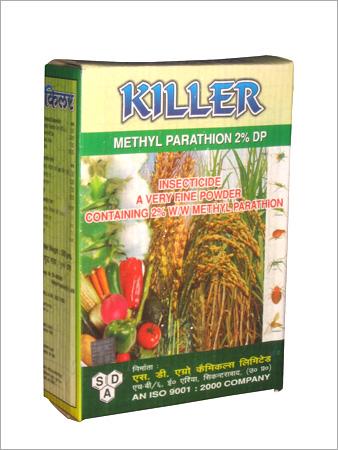Another shocking entry into Dow’s Hall of Shame.
An investigation conducted by New Zealand’s 60 Minutes current affairs program titled To Die For has found high levels of the pesticide chlorpyrifos in The Downtown Inn, the Chiang Mai hotel linked to the deaths of at least seven tourists earlier this year (see: Lost smiles in LOS).
60 Minutes reporter Sarah Hall traveled to Chiang Mai and stayed at The Downtown Inn in the Night Bazaar section of the city and took swab samples from the hotel back to New Zealand for analysis, with further tests conducted in Italy.
First produced in 1965 by Dow Chemical Company, chlorpyrifos, an organophosphate, is a popular ingredient in flea collars and shampoo for dogs, and is also used in the manufacture of cockroach pesticides, termite treatment, and used widely in agricultural to keep large areas pest and insect free.
Effective as a pesticide, chlorpyrifos is readily absorbed into the skin by touch, or from inhaling contaminated air. Tests in the past have found high levels of chlorpyrifos remain in the air up to 24 hours after delivery, while a 1996 study found that chlorpyrifos resulted in birth defects in humans, particularly affecting the heart, palate, brain, and nerves.
Dow Chemical concealed 294 reports of chlorpyrifos death
The dangers of chlorpyrifos did not become apparent until the mid-1990s and at the time it was found Dow were in possession of 249 reports of chlorpyrifos poisoning that they had failed to forward to the US Environmental Protection Agency (USEPA), despite being honor bound to do so.
Dow was subsequently fined $US 732,000 for not submitting the reports, was ordered to remove the “safe” description from its chlorpyrifos product Dursban, and were ordered to pay an additional $2 million penalty.
In 2001, ahead of looming regulatory action by the USEPA, Dow in the US withdrew registration of chlorpyrifos for use in residences and places where children could be exposed, and also restricted its use on crops.
However, the agreement reached with the USEPA only applies to the US market and Dow still actively sells chlorpyrifos internationally, particularly in developing countries such as India, where the it is labeled safe for humans and animals – a blatant lie by the company.
Chlorpyrifos is easily ingested by the body
|
|
Categorized a neurotoxin, chlorpyrifos is easily ingested by the body through touch or breathing, with ingestion causing a disruption in the transmission of nerve impulses resulting in dizziness, headaches, loose motions, increased urination and salivation. When the ingestion is excessive, it could lead to paralysis, convulsions and even death.
While quickly absorbed by the body, chlorpyrifos only has a half-life of one day, explaining why forensic doctors in Thailand, along with other international agencies, have not have been able to detect it in tissue samples and postmortem examinations conducted on the seven dead tourists.
It would also lay to rest accusations of a cover up made by the family of New Zealand tourist Sarah Carter, who died after staying at The Downtown Inn in Chiang Mai, on a website they set up titled Thailand Travel Tragedies and at least one Bangkok-based freelance journalist who has been particularly vitriolic in condemning the handling of the deaths by Thai authorities, along with no shortage of wild conspiracy theories dreamed up by some sections of the Thailand expatriate community.
Though Dow remains the largest manufacturer of chlorpyrifos today, other manufacturers include Dow Agro Sciences LLC, a division of Dow Chemical which also trades as Dow Elanco, Danish company Cheminova, Spanish company Makteshim-Agan, Garda in India and US company Platte Chemical Company Chemical.
In an interview published in The Dominion, United Nations scientist, Ron McDowall, said there was a strong likelihood Wellington woman Sarah Carter and at least six other people had died died from excessive exposure to chlorpyrifos, which causes identical symptoms to those suffered by guests staying at, or visiting, The Downtown Inn in Chiang Mai.
Chiang Mai tourists “killed by an overzealous bed bug sprayer”
According to Dr. McDowall, the fact that traces of chlorpyrifos were found three months after Carter’s death and after the room was cleaned suggested there was a high concentration when she was staying there.
“I think she has been killed by an overzealous sprayer who’s been acting on the instructions of the hotel owner to deal with bed bugs,” McDowall said.
Dr. McDowall said he had consulted with other experts in New Zealand and Italy and all agreed the likely cause of death of the seven was from excessive exposure to pest control chemicals.
Thailand police confirmed they are looking into the possibility the tourists were killed by over exposure to pest control chemicals and had already raided the pest control company used by the hotel.
Richard Carter, father of dead tourist Sarah Carter, said it was “good to get an answer” about how his daughter died, though added that “it’s pretty horrific that they have such low standards that this can happen”.
If chlorpyrifos can be proved to be linked to the deaths of the seven tourists in Chiang Mai the result will be a serious blow to the city’s tourism industry, as well as to the general tourism sector in Thailand until authorities announce what steps they will take to prevent lethal chemicals such as this being used in tourist accommodation areas, how it will be policed, and whether any criminal charges are laid.
Chlorpyrifos may also explain the deaths of American tourist Jill St Onge and Norwegian holiday-maker Julie Michelle Bergheim at The Laleena Guesthouse on Koh Phi Ph on May 6, 2009, with postmortem examinations, including one in Norway, failing to determine the cause of death of Ms. Bergheim.
It was not possible to obtain comments from Chiang Mai government officials or management of The Downtown Inn in Chiang Mai due to today being Sunday. A response from Dow Chemical has been sought, but not been received up to the time of publication.
© John Le Fevre, May 2011
See: USEPA chlorpyrifos Fact Sheet
See: 60 Minutes New Zealand episode: To Die For
Related: Thailand authorities dismiss chlorpyrifos as cause of Chiang Mai hotel tourist deaths
Related: Chiang Mai tourist death hotel mystery remains – governor slams foreign media report





